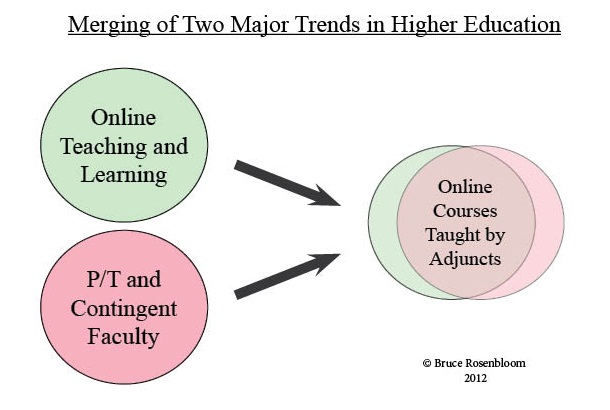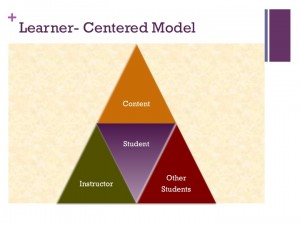I was going to title this post “Faculty Resistance to Online,” but I feel that is too strong. While it is certainly true that many faculty have resisted, downplayed, disparaged, and attacked online learning in principle and in practice, there are many legitimate concerns with online learning from a faculty perspective. These concerns, discussed in a major study entitled, “Digital Faculty: Professors, Teaching and Technology, 2012,” will be the subject of this post.
The Babson Survey Group and Inside Higher Education combined forces to conduct a major study on how professors are dealing with a deluge of technology at their institutions and in their teaching. Two separate surveys were conducted–one for faculty and one for technology administrators. Thousands of responses were collected from a representative sample of institutions in all Carnegie categories, and from a wide spectrum of full- and part-time, tenured and non-tenured faculty. In all, this was a significant effort to accurately assess faculty and administrator’s views on technology in the academy.
Summary of Findings
I would suggest that you read the 50- page study available at this link. It would be difficult to summarize the findings from such an extensive study in this blog post, so I will offer what I consider its highlights.
- Faculty are incorporating increasing amounts of digital content into their classes and even creating such content themselves. The fact that 43% of faculty in this survey reported creating their own digital content was an eye-opener to me. Using screen capture, and to a much lesser degree, lecture-capture, faculty in earnest are beginning to explore various technologies to improve learning outcomes in their courses.
- Faculty feel that such efforts are fairly time-consuming, work not properly recognized or rewarded by their institution.
- Online-only digital scholarship is recognized as legitimate by 60% of faculty, yet only 12 % feel their institutions respect and reward such scholarship equal to traditional published material.
- A majority of faculty feel that digital communications have increased both their productivity and creativity in their work, and have helped foster research collaborations. The downside to these positives have been increased workload and often more stress experienced by instructors.
- Although many faculty use a Learning Management System (LMS) to post a syllabus or utilize an online grade book, many of the other tools are markedly under-utilized by most faculty. Administrators believe LMS usage is much higher than faculty report.
- The majority of faculty report feeling more excitement than fear regarding e-textbooks, online educational content, and the changing role of faculty (from lecturing to coaching). However, for online learning, the fear meter swung decidedly north, particularly in their view of for-profits, which 88% fear. Administrators are much more positive about online learning than faculty.
Take-aways
Faculty have a clear idea what serves them and what doesn’t. Although this survey clearly shows that many faculty are using technology in their classes, this embrace is tempered by lack of institutional support in terms of tenure and promotion policies, and the lack of clear guidelines for valuing digital scholarship. So although many faculty seem resistant to change in terms of technology, the reality is more nuanced. The slow evolution of institutional policies and procedures for the digital revolution is a significant factor hampering faculty adoption of these tools for teaching.
The issue of instructor time is pivotal for understanding this study. Most faculty had no issue with e-books for their courses or video (and other digital content) in their classes. They also recognize the utility of digital communication for enhancing contact with their students. However, if faculty members take extra time to develop their own digital materials, or even more time to teach a hybrid/online course, then there is pushback from the professoriate for lack of compensation and recognition for their increased workload. Clearly, in both these areas, work is needed to align the administrations desire for online learning and promoting a greater use of technology with the realities of their faculty’s needs and perceptions in the trenches.
CUNY Implications
I would love to see the same survey given to CUNY faculty and administrators. My hypothesis is that CUNY faculty would be significantly more conservative in their use of technology and views toward hybrid/online teaching. Although there may be exceptions, generally the more unionized and tenured the teaching faculty are, the greater the likelihood of resisting change of any type, including digital tools and materials. I would also hypothesize an even greater gap between the views of CUNY administrators and faculty than those found in this study. As is evident by initiatives like Pathways, there seems to be a significant management/faculty divide that is not going away any time soon. In my estimation, this is unfortunate given the positive potential of the digital revolution for teaching, learning and scholarship.
Reference:
Allen, I.E., Seaman, J., Lederman, D., & Jaschik, S., (August, 2012), “Digital Faculty: Professors, Teaching and Technology, 2012,” Inside Higher Ed and The Babson Group. Retrieved from: http://www.insidehighered.com/news/survey/digital-faculty-professors-and-technology-2012








